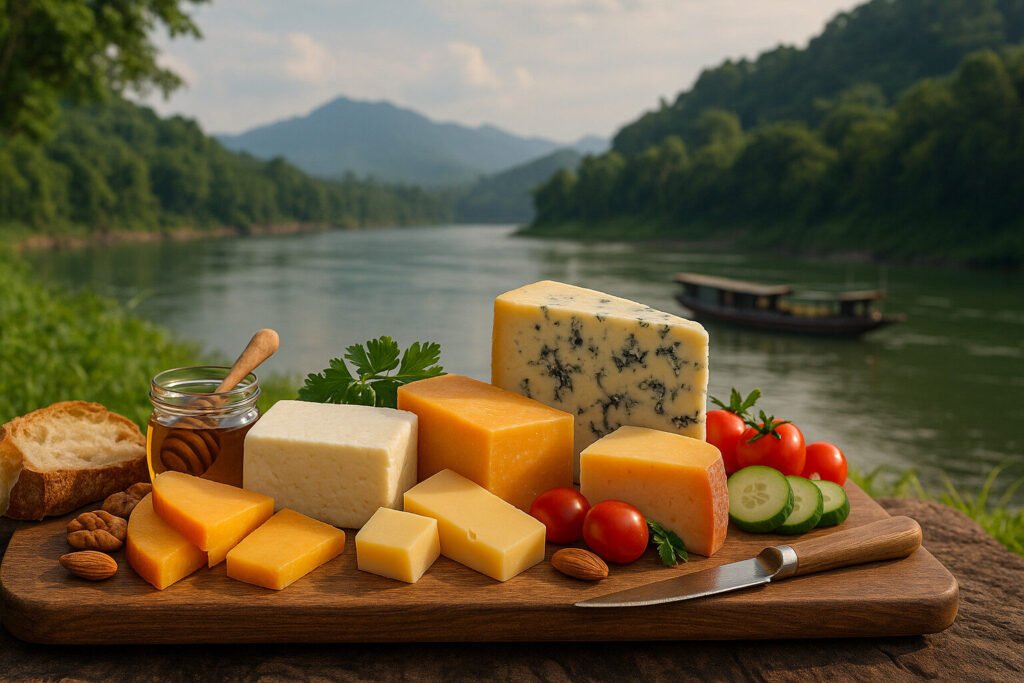Cheese Of Mekong Region
Definition and Scope
Cheese from the Mekong Region refers to dairy products originating from countries along the Mekong River, including Vietnam, Cambodia, Laos, Thailand, and Myanmar. These cheeses are a relatively recent culinary development, often blending local ingredients with adapted European techniques. The scope encompasses fresh, soft-ripened, and brine-matured styles that reflect the region’s tropical climate and agricultural practices.
Production is typically small-scale, utilizing milk from local water buffalo, cows, or goats. These cheeses are distinguished by their incorporation of regional flavors, such as herbs, spices, and fruits native to Southeast Asia. The category represents a growing niche within global cheese taxonomy, showcasing innovation in dairy craftsmanship outside traditional cheesemaking centers.
Production Techniques
Mekong Region cheesemaking often begins with milk sourced from small herds grazing on local flora, which imparts unique terroir characteristics. Producers commonly use gentle pasteurization or thermization to ensure safety while preserving delicate milk proteins. Acidification is typically achieved through both bacterial cultures and natural fermentation processes suited to warm, humid environments.
Curd handling varies from ladling for delicate fresh cheeses to pressing for semi-firm varieties. Many producers employ specialized brining or dry-salting methods adapted to high humidity conditions. Aging periods are generally shorter than European counterparts, with careful temperature and humidity control in specialized maturation rooms to prevent spoilage.
Sensory Profile
Mekong cheeses typically present mild to moderate acidity with pronounced creaminess, particularly in water buffalo milk varieties. Flavor profiles range from milky and sweet in fresh cheeses to earthy and tangy in aged examples. Many incorporate local ingredients like lemongrass, pandan, or chili, creating distinctive aromatic qualities not found in Western cheeses.
Texture spectrum includes soft and spreadable fresh cheeses to semi-firm aged varieties with small, irregular eyes. The rinds often develop complex microbial communities influenced by the tropical climate, contributing mushroomy or slightly funky notes. These cheeses generally exhibit lower salt content than their Mediterranean counterparts, allowing the subtle milk flavors to dominate.
Culinary Applications
Fresh Mekong cheeses are commonly used in salads, sandwiches, and as accompaniments to tropical fruits. Their mild acidity and creamy texture make them ideal for balancing spicy Southeast Asian dishes. Many local chefs incorporate these cheeses into modern interpretations of traditional recipes, creating fusion cuisine that bridges Eastern and Western culinary traditions.
Aged varieties serve as table cheeses or grating components for noodle dishes and rice preparations. The region’s cheesemakers often pair their products with local beers, fruit wines, and herbal teas. These cheeses have become essential components in the growing gourmet tourism industry throughout the Mekong countries.
Regional Examples
Vietnam produces several notable cheeses, including Dalat-style brie made with cow’s milk in the Central Highlands. Cambodian artisans create fresh cheese varieties using milk from indigenous cattle breeds, often infused with Kampot pepper. Laotian producers specialize in smoked cheeses using traditional methods over local hardwoods.
Northern Thailand has developed unique brined cheeses similar to feta but using goat’s milk and local herbs. Myanmar’s emerging dairy sector produces simple fresh cheeses often served with tea leaf salad. Each country’s output reflects its specific cultural preferences and available dairy resources, creating a diverse subcategory within Asian cheesemaking.

